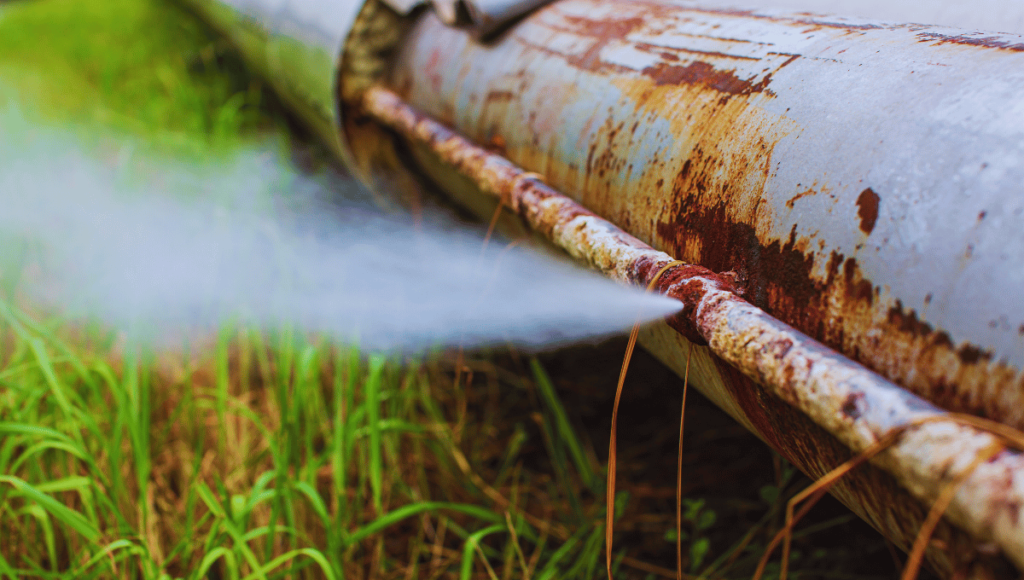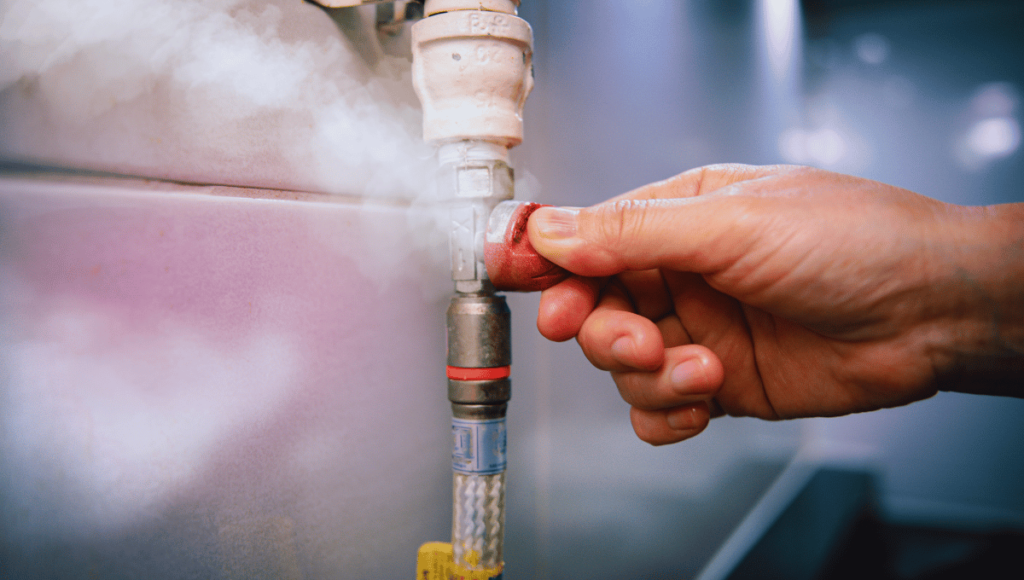Why Does Gas Leak from My Carburetor?
A gas leak from your carburetor often indicates a stuck float or a damaged needle valve. These issues cause fuel to overflow.
Gas leaks from a carburetor can be both frustrating and dangerous. Understanding the root causes helps in timely repairs. A stuck float or a damaged needle valve are common culprits. The float controls fuel levels inside the carburetor bowl, and when it malfunctions, excess fuel can escape.
Similarly, a faulty needle valve fails to seal properly, causing fuel leakage. Identifying these issues early prevents further damage and enhances your engine’s performance. Regular maintenance and inspection are crucial to avoid such problems. Always ensure that your carburetor components are in good working condition to prevent gas leaks.

Common Causes Of Carburetor Gas Leaks
Is your carburetor leaking gas? There are several common reasons for this issue. Understanding these causes can help you fix the problem quickly.
Worn Out Gaskets And Seals
Gaskets and seals in the carburetor can wear out over time. When this happens, gas can leak through these worn parts.
- Check for cracks or tears in the gaskets.
- Inspect the seals for any signs of damage.
- Replace old gaskets and seals to stop the leak.
Float Bowl Issues Of Gas Leaks
The float bowl holds the fuel in the carburetor. Problems with the float bowl can cause gas leaks.
- Make sure the float bowl is not cracked or damaged.
- Check the float height; it should be set correctly.
- Ensure the float bowl gasket is in good condition.
Stuck Float Needle
A stuck float needle can also cause gas to leak. The float needle regulates fuel flow into the carburetor.
- Inspect the float needle for debris or dirt.
- Clean or replace the float needle if it is stuck.
- Ensure the needle moves freely to prevent leaks.
Identifying The Source Of The Leak
Gas leaking from your carburetor can be frustrating. Identifying the source of the leak is crucial. This helps you take the right steps to fix it. Below are some effective methods to locate the leak.
Visual Inspection Tips
Start by examining the carburetor closely. Look for any visible cracks or damage. Check the fuel lines connected to the carburetor. Ensure they are not loose or cracked.
Inspect the gaskets and seals. These components often wear out over time. Look for any signs of fuel around these areas. Use a flashlight for better visibility.
Check the float bowl. Ensure it is not overflowing. An overflowing float bowl often causes leaks. Look for any obstructions in the needle valve.
| Component | What to Look For |
|---|---|
| Fuel Lines | Cracks, looseness |
| Gaskets and Seals | Wear, fuel stains |
| Float Bowl | Overflowing fuel |
Using Smell And Touch
Use your senses to detect the leak. Smell around the carburetor area. A strong gasoline smell indicates a leak.
Feel around the fuel lines and gaskets. Use a clean cloth to wipe these areas. If the cloth becomes wet with fuel, you have found the leak.
Pay attention to sticky or oily residue. This often points to a fuel leak. Carefully touch the carburetor base and sides. Note any dampness or fuel residue.
- Smell for gasoline odor
- Wipe with a clean cloth
- Feel for sticky or oily residue
The Role Of The Float Mechanism
Understanding why gas leaks from your carburetor starts with the float mechanism. The float controls the fuel level in the carburetor bowl. When the float fails, it often leads to gas leaks. Knowing how the float works and adjusting it can help fix this issue.
How The Float Works
The float sits inside the carburetor bowl, floating on the fuel. It attaches to a needle valve that controls the fuel flow. When the fuel level rises, the float rises, pushing the needle valve to stop fuel flow. When the fuel level drops, the float drops, opening the needle valve to allow more fuel in.
- Float rises: Fuel level is high, needle valve closes.
- Float drops: Fuel level is low, needle valve opens.
If the float or needle valve malfunctions, gas can overflow the bowl. This overflow leads to gas leaking from the carburetor. Regular checks on the float mechanism can prevent this issue.
Adjusting The Float Level
Adjusting the float level helps control the fuel flow. First, remove the carburetor bowl. Locate the float and the adjusting tab. Gently bend the tab to set the float height. Consult your vehicle’s manual for the correct float height.
- Remove the carburetor bowl.
- Locate the float and adjusting tab.
- Bend the tab to adjust the float height.
- Consult the manual for the correct height.
Proper float adjustment ensures the right fuel level in the bowl. This prevents gas leaks and keeps your carburetor working efficiently. Regular maintenance can avoid major issues. Always check the float mechanism during tune-ups.
Gasket And Seal Replacement
Gas leaking from your carburetor is a big problem. One common cause is worn gaskets and seals. Replacing these parts can stop the leak. This guide will help you understand how to choose and replace them.
Choosing The Right Replacement Parts
First, you need the correct parts. Check your carburetor’s model number. Visit a trusted store or website. Make sure to buy gaskets and seals that match your carburetor. Using the wrong parts can cause more leaks.
Here are some tips for choosing the right parts:
- Check the material of the gasket and seal. Rubber and cork are common options.
- Make sure the parts are the right size. A good fit is important.
- Read reviews from other users. This helps you know the quality of the parts.

Step-by-step Replacement Process
Follow these steps to replace the gaskets and seals:
- Gather your tools: You will need a wrench, screwdriver, and new gaskets and seals.
- Turn off the engine: Make sure the engine is cool before you start.
- Remove the carburetor: Use the wrench to take off the bolts holding the carburetor.
- Take out old gaskets and seals: Carefully remove the worn parts.
- Clean the area: Use a cloth to wipe away any dirt or old gasket material.
- Install new gaskets and seals: Place the new parts in the correct spots.
- Reattach the carburetor: Bolt it back in place and make sure everything is tight.
- Test for leaks: Start the engine and check for any gas leaks.
Replacing gaskets and seals can be simple. With the right parts and steps, you can stop gas leaks from your carburetor.
Solving Stuck Float Needle Problems
A stuck float needle in your carburetor can cause gas leaks. This issue can be frustrating and dangerous. Here’s how to solve it.
Cleaning The Needle And Seat
The float needle and seat often get dirty. Dirt or debris can cause the needle to stick. To clean them, follow these steps:
- Turn off the fuel supply.
- Remove the carburetor bowl carefully.
- Locate the float needle and seat.
- Use a carburetor cleaner spray to clean them.
- Use a soft brush for stubborn dirt.
Ensure the needle moves freely after cleaning. A clean needle reduces the risk of gas leaks.
When To Replace The Needle
Sometimes, cleaning is not enough. The needle or seat may be worn out. Here are signs you need to replace them:
- The needle is visibly damaged.
- The seat has deep scratches.
- The needle does not move smoothly after cleaning.
Replacing the needle involves these steps:
- Purchase a replacement needle and seat.
- Turn off the fuel supply and remove the carburetor bowl.
- Remove the old needle and seat.
- Install the new needle and seat.
- Reassemble the carburetor bowl.
Replacing a damaged needle ensures your carburetor works properly. This can prevent future gas leaks.
Fuel Supply Line Issues
One common reason for gas leaking from your carburetor is fuel supply line issues. The fuel supply line transports gasoline from the tank to the carburetor. If there’s a problem with this line, gas can leak. It’s crucial to inspect and maintain the fuel supply line regularly.
Checking For Cracks And Damage
Begin by checking the fuel supply line for cracks and damage. A damaged line can’t properly contain the gas. Look closely for any visible cracks or splits. Use a flashlight if needed.
Feel the line with your hands. Sometimes, small cracks are hard to see. If you feel any rough or uneven spots, the line might be damaged. Also, inspect the connections at both ends of the line. Make sure they are tight and secure.
Here’s a simple checklist for inspecting your fuel supply line:
- Look for visible cracks.
- Feel for rough spots.
- Check both end connections.
Replacing Fuel Lines
If you find any damage, it’s time to replace the fuel lines. First, turn off the engine and allow it to cool. This step ensures safety while working on the fuel system.
Next, gather the necessary tools:
- New fuel line
- Wrench
- Clamps
- Scissors or a knife
Follow these steps to replace the fuel line:
- Remove the damaged line using a wrench.
- Measure and cut the new fuel line to the correct length.
- Attach the new line to the fuel tank and carburetor.
- Secure the connections with clamps.
Always ensure the new line is free of kinks and properly secured. This will prevent future leaks and keep your engine running smoothly.
Adjusting The Carburetor Settings
A gas leak from your carburetor can be frustrating. One critical aspect to check is the carburetor settings. Proper adjustment ensures your engine runs smoothly and efficiently.
Fine-tuning The Air-fuel Mixture
The air-fuel mixture must be just right. Too much fuel or too much air can cause leaks. Adjusting the mixture is simple but requires care.
Use a screwdriver to turn the mixture screws. Turn them slowly to find the sweet spot. Listen to the engine’s sound as you adjust.
A properly balanced mixture prevents gas leaks. It also improves fuel efficiency and engine performance.
The Importance Of Proper Synchronization
Synchronization ensures all carburetor parts work together. Misalignment can cause leaks and poor performance.
Check the throttle linkage and choke mechanism. Ensure they move smoothly and in sync. Misaligned parts can lead to gas overflow.
| Component | Action |
|---|---|
| Throttle Linkage | Ensure smooth movement |
| Choke Mechanism | Check for proper alignment |
Regular maintenance prevents synchronization issues. It also extends the life of your carburetor.
When To Seek Professional Help
Gas leaks from your carburetor can be dangerous. Sometimes, fixing it yourself isn’t safe. Knowing when to call a professional helps keep you and your vehicle safe.
Signs You Need An Expert
Some signs mean you need expert help. Look for these issues:
- Strong gas smell: A strong gas smell means a serious leak.
- Visible gas puddles: Puddles under the car need expert attention.
- Engine stalling: Stalling often shows a bigger problem.
- Reduced fuel efficiency: Lower mileage means there’s a leak.
- Unusual engine noise: Noises can signal carburetor problems.
Finding A Reputable Mechanic
Choosing the right mechanic is vital. Follow these steps to find the best one:
- Check Reviews: Read online reviews for honest opinions.
- Ask for Recommendations: Friends and family can suggest trusted mechanics.
- Verify Credentials: Ensure the mechanic has proper certification.
- Compare Prices: Get quotes from multiple mechanics for the best price.
- Visit the Shop: A clean, organized shop shows professionalism.
Here’s a quick summary in a table:
| Steps | Details |
|---|---|
| Check Reviews | Read online reviews for honest opinions. |
| Ask for Recommendations | Friends and family can suggest trusted mechanics. |
| Verify Credentials | Ensure the mechanic has proper certification. |
| Compare Prices | Get quotes from multiple mechanics for the best price. |
| Visit the Shop | A clean, organized shop shows professionalism. |
Preventative Maintenance To Avoid Future Leaks
Regular maintenance of your carburetor can prevent gas leaks. Taking care of it ensures your vehicle runs smoothly. Below are some essential steps.
Regular Cleaning And Inspection
Cleaning your carburetor often helps avoid gas leaks. Dirt and debris can clog parts. Use a carburetor cleaner to clear it out.
- Remove the carburetor from the engine.
- Spray the cleaner on the carburetor.
- Use a brush to remove stubborn dirt.
- Inspect for any worn-out parts.
Check the gaskets and seals. They must be in good condition. Worn gaskets can cause leaks. Replace them if they are damaged.
The Benefits Of Routine Tune-ups
Regular tune-ups keep your carburetor healthy. It ensures all parts are working well. This helps in preventing gas leaks.
- Inspect the fuel lines for cracks.
- Check the float level in the carburetor.
- Adjust the air-fuel mixture for optimal performance.
- Ensure the throttle and choke are operating smoothly.
Routine tune-ups extend the life of your carburetor. It saves you money on repairs. Consistent maintenance keeps your vehicle running efficiently.
Frequently Asked Questions
Why Does My Carburetor Leak Gas When Off?
A carburetor may leak gas when off due to a stuck float or faulty needle valve. These issues prevent the carburetor from sealing correctly, causing fuel to overflow.
How Do I Fix A Leaking Carburetor?
To fix a leaking carburetor, inspect and clean the float and needle valve. Replace any damaged or worn components to ensure proper sealing.
Can A Dirty Carburetor Cause Gas Leaks?
Yes, a dirty carburetor can cause gas leaks. Debris can obstruct the float or needle valve, preventing proper sealing and causing fuel overflow.
What Are The Symptoms Of A Bad Carburetor?
Symptoms of a bad carburetor include gas leaks, poor engine performance, difficulty starting, and black smoke from the exhaust.
Conclusion
Addressing a carburetor gas leak promptly ensures your vehicle runs safely and efficiently. Regular maintenance can prevent many issues. Understanding common causes helps in diagnosing and fixing leaks quickly. Always consult a professional mechanic for persistent problems. Keeping your carburetor in good condition enhances performance and longevity.

At AdjustCarburetor, we are passionate about optimizing engine performance and sharing our expertise in carburetors, small engines, fuel injection systems, air-fuel ratios, and ignition timing solutions




